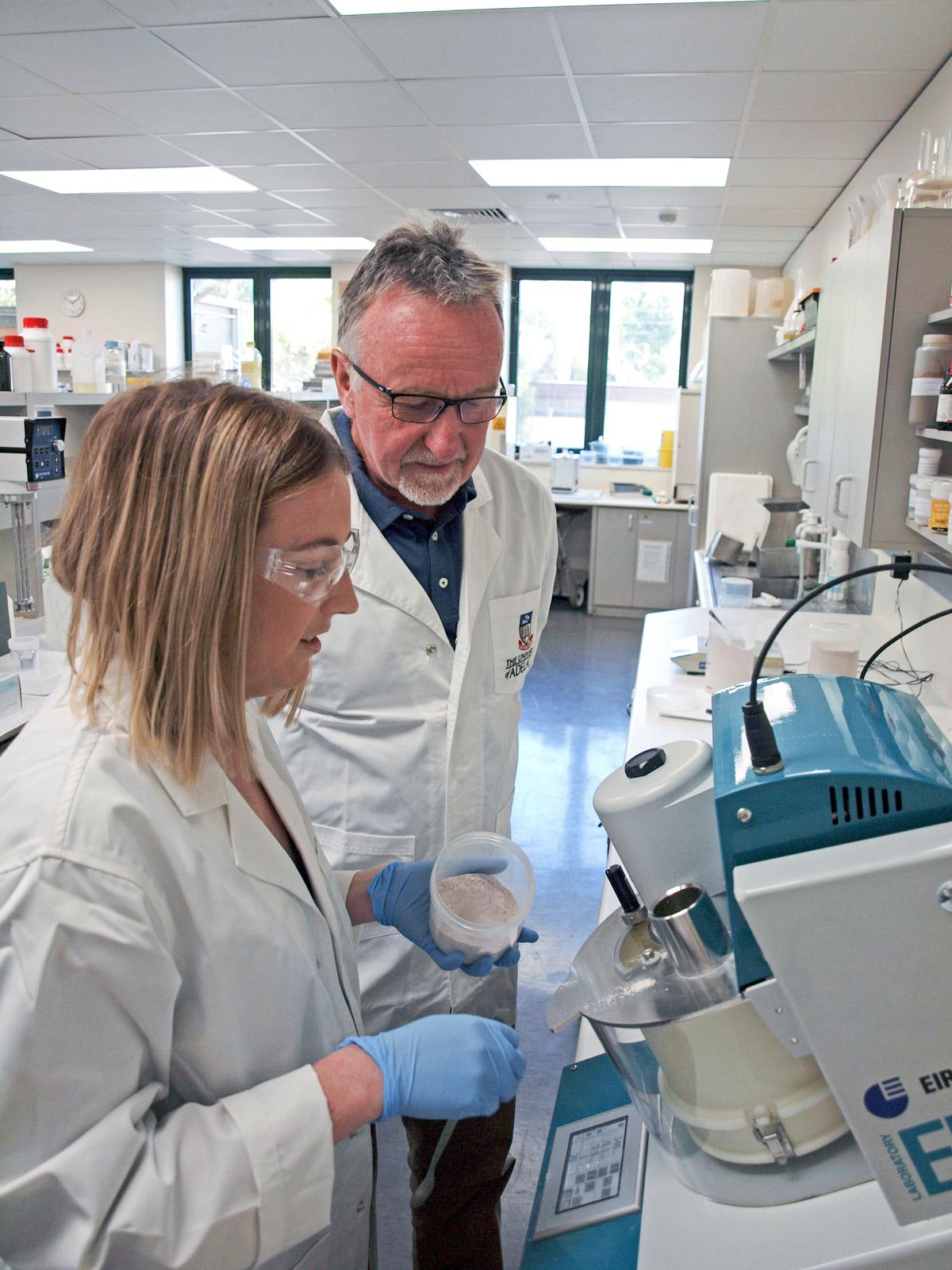Further action on cadmium needed for global food safety

Not everything in soil is good, and some trace elements – like cadmium – can be picked up by plants and transferred to humans as they eat.
An international group of experts, led by Mike McLaughlin from the University of Adelaide's Fertiliser Technology Research Centre, urge that increasing intake of cadmium is largely due to changes in the soil as it becomes more acidic or salty, and this needs to be addressed for human safety.
“Cadmium is a naturally occurring human toxin present in all soils,” says Professor McLaughlin.
“It can be transferred through the food chain to humans and can represent a health hazard.
“Cadmium levels in soils can rise through natural geological weathering or human activity such as industrial pollution or the addition of phosphatic fertilisers, organic manures or wastes.”
Image: Professor Mike McLaughlin with technical officer Ashleigh Broadbent in the University's Fertiliser Technology Research Centre labs.
Fast Facts: Cadmium
- Cadmium is a heavy metal element
- It has the atomic number 48
- When consumed in large amounts, cadmium is toxic to humans
- Cadmium can get into our food from cadmium-rich soil
Cadmium is carcinogenic to humans in higher doses and is often consumed through food and beverages.
Depending on the country, the level of cadmium that’s consumed through food varies, and for some countries the level of cadmium and heavy metal trace elements are currently not considered a major health risk by the World Health Organization (WHO), compared to bacteria, viruses and parasites.
“However, in some developing countries cadmium intakes are increasing, so management of cadmium transfer through the food chain remains important to minimise human exposure,” says Professor McLaughlin.

Cadmium, which appears in soils around the world, is toxic to humans in high concentrations. Image: Mark Robinson (CC BY 2.0)
To prevent this, the group asserts that cadmium transfer can be managed using genetic and agronomic approaches.
“Farmers now have the option to manage cadmium through choice of crop and/or new low-cadmium cultivars,” says Professor McLaughlin.
“High-risk soils (with high natural or added cadmium) can now be identified by soil testing and various agronomic options are available to minimise plant uptake from these soils.”
Together, these practices could help limit cadmium in the soil quickly but require reducing the use of certain fertilisers and manures, they suggest in their review, published in Advances in Agronomy. Importantly, they say, this could help buffer soil in areas that naturally get more cadmium from rock weathering.
Further reading
- Chapter One - Managing cadmium in agricultural systems, Advances in Agronomy
- This article, written by science journalist Debbie Devis, is republished with permission from Cosmos. View the original article.
- University of Adelaide media release: Further action on Cadmium needed for global food safety
